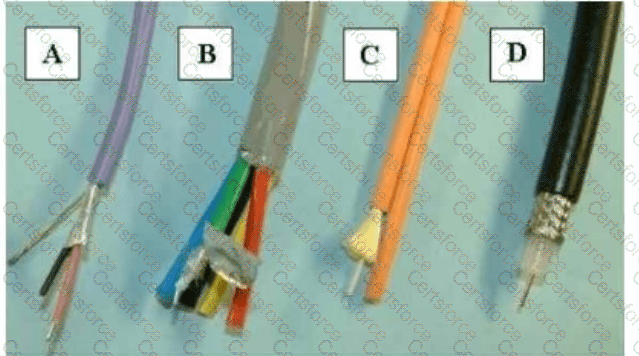The only cable in the image capable of Ethernet transmission over 1 mile (1.6 km) is C, which is fiber optic cable.
???? Why?
According to the AVIXA CTS Exam Guide and industry standards such as IEEE 802.3:
Twisted pair cables (like A and B) are limited to 100 meters (328 feet) for Ethernet.
Coaxial cable (D) is typically not used for long-distance Ethernet and has high attenuation over distance.
Fiber optic cable (C) can support data transmission over kilometers depending on the type (single-mode or multi-mode). For 1 mile (1.6 km), single-mode fiber is ideal.
From the CTS Exam Guide, 5th Edition – Chapter 3: Networking, it explains:
"For high-speed and long-distance data communication, fiber optic cabling is essential. Single-mode fiber can transmit Ethernet over distances exceeding 10 km, making it the only practical choice for transmissions over 1 mile."
Additionally:
Fiber is immune to electromagnetic interference.
Provides higher bandwidth and lower attenuation compared to copper-based cables.
[References:, AVIXA CTS Exam Guide, 5th Edition – Chapter 3: Networking, pages 75–80, IEEE 802.3 Standards for Ethernet, AVIXA Body of Knowledge: Network Infrastructure & Cabling Types, , , ]

Submit